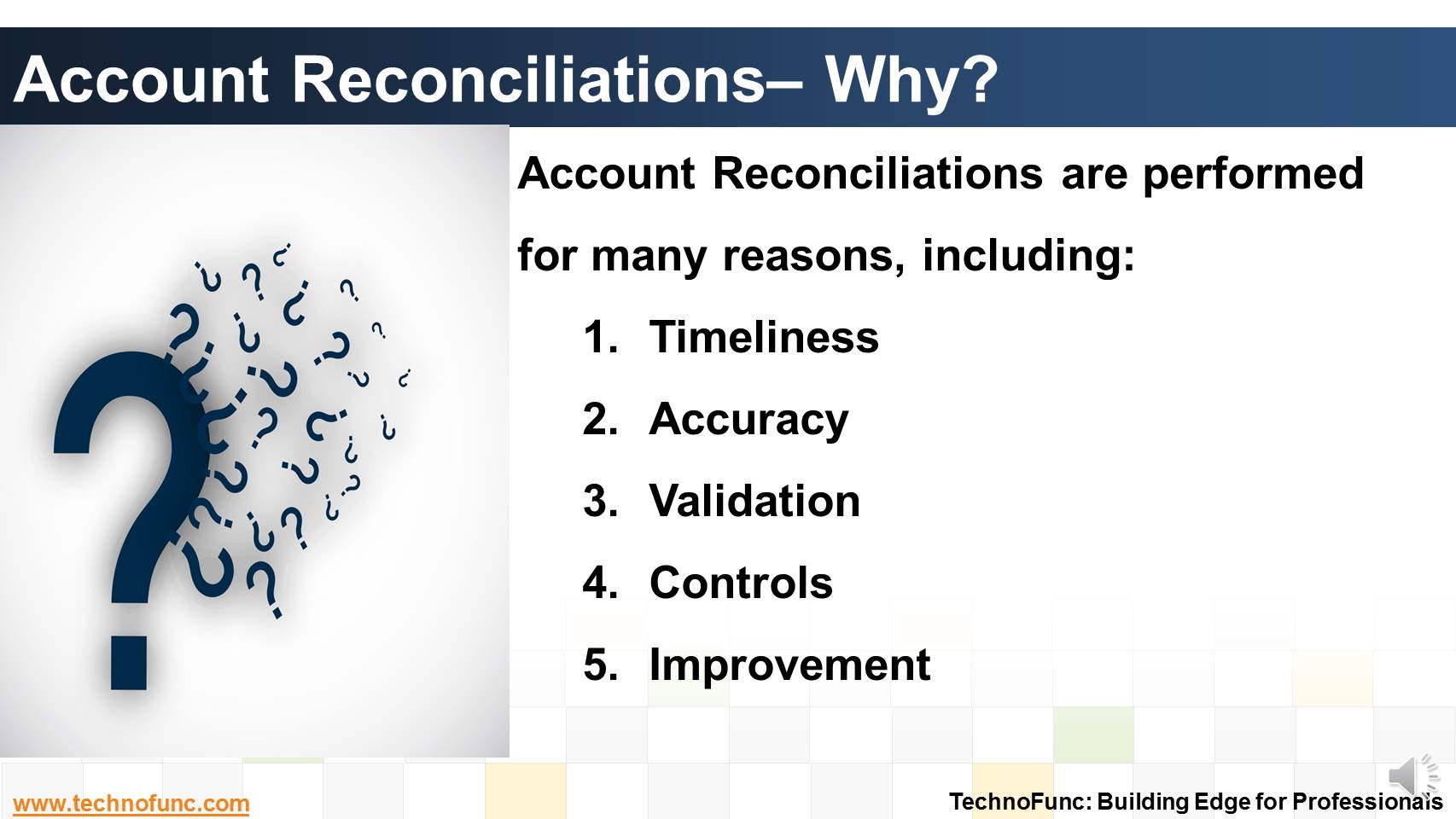- Home
- Business Processes
- Industry Knowledge
- Aerospace Industry
- Automotive Industry
- Banking Domain
- BFSI Industry
- Consumer/ FMCG Industry
- Chemicals Industry
- Engineering & Construction
- Energy Industry
- Education Domain
- Finance Domain
- Hospitality Domain
- Healthcare Industry
- Insurance Domain
- Retail Industry
- Travel and Tourism Domain
- Telecom Industry
- Leadership Skills
- eLearning
- Home
- Functional
- Cash Management
- Account Reconciliations– Why?
Account Reconciliations– Why?
In the previous article we talked about the meaning of the account reconciliations. Now as you now the definition of account reconciliation, in this article let us see why it is carried out.
Account Reconciliations –Why?
Personnel with responsibility for Account Reconciliations hold key Controllership responsibilities. Account Reconciliations are performed for many reasons, including:
Timeliness:
To ensure transactions are timely recorded in the general ledger in the right accounting period, following the matching concept under accrual accounting.
Accuracy:
To ensure transactions are accurately recorded in the correct statutory entity.
Validation:
To identify, document, track and explain transactional differences between general ledger and sub-ledger balances and/or other independent sources. In case of bank reconciliation, general ledger balance is validated against the bank statement.
Controls:
To identify and guard against fraudulent activity, identify errors and reduce losses.
Improvement:
To conduct root cause analysis on any operational defects identified and execute process improvement projects to address them

Related Links
You May Also Like
-
Disbursement Float is the time taken from payment creation to settlement. Collection float is the sum total of time taken by Payment Float; Mail Float; Processing Float and Availability Float. Learn more!
-
Although there is no straight forward answer to the question, how to best organize a treasury function, this article provides an generic view of the way large MNCs creates departments or sub-functions within the treasury function.
-
The objective of funding Management is to implement strategies that lead to the best borrowing rates and lower investment costs. Learn how treasury aids in loans and investment management functions.
-
Why enterprises need cash management. What is the purpose of having a well defined cash management process?
-
The Cash Management component ensures that the enterprise has sufficient liquidity for payments that are due and to monitor payment flows. Learn how treasury plays an important role in cash management for the enterprise.
-
The topic for this lesson is "Introduction to Cash Management Process". We start with the learning objectives for building requisite functional expertise in cash management process.
-
So many codes in the lines that are there in a Bank Statement. It contain lots and lots of meaningful information that can help automated many tasks. Explore more!
-
Have you ever wondered what is actually a Bank Statement and why it is needed. What is the information that is available in a bank statement?
-
Account Reconciliation – How? Learn the three key attributes to perfom account reconciliation.
-
Complete Bank Reconciliation Process
Bank Reconciliation Process is a eight step process starting from uploading the Bank Statement to finally posting the entries in General Ledger. Learn the Eight Steps in Detail!
Explore Our Free Training Articles or
Sign Up to Start With Our eLearning Courses

About Us
Learning
© 2023 TechnoFunc, All Rights Reserved











